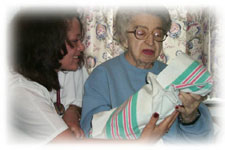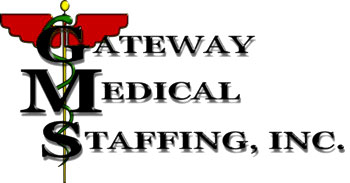Name:
|
|
Email:
|
|
|
1.
|
Blood on instruments or equipment cannot infect you because air kills HIV and HBV.
|
|
|
True
|
|
|
False
|
|
2.
|
What parts of the body may be affected by tuberculosis? |
|
|
Lungs and spine.
|
|
|
Lungs and kidneys.
|
|
|
Lungs only.
|
|
|
Many parts of the body.
|
|
3.
|
What is the first step in cleaning up a blood spill?
|
|
|
Wipe up the spill with a towel and dispose of the towel.
|
|
|
Apply a germicide or bleach mixed with water.
|
|
|
Put on protective gloves.
|
|
|
Allow the surface to air dry completely.
|
|
4.
|
A needlestick with an HIV-contaminated needle is more likely to infect you than a needlestick with an HBV-contaminated needle.
|
|
|
True
|
|
|
False
|
|
5.
|
OSHA has introduced rules based on guidelines developed by the CDC that are designed to protect you from bloodborne infections.
|
|
|
True
|
|
|
False
|
|
6.
|
Which skin test result is an indication of TB infection?
|
|
|
Skin redness.
|
|
|
Induration of 10 millimeters or larger.
|
|
|
Absence of skin redness.
|
|
|
Absence of induration.
|
|
7.
|
Specimen containers with blood or other blood or other body fluids should be marked with the biohazard label.
|
|
|
True
|
|
|
False
|
|
8.
|
Regular eyeglasses provide adequate eye protection if the lenses are made of glass, not plastic.
|
|
|
True
|
|
|
False
|
|
9.
|
Which activity can spread HIV or HBV from one person to another outside of work?
|
|
|
Using a toilet.
|
|
|
Having sex.
|
|
|
Using a public telephone.
|
|
|
Shaking hands.
|
|
10.
|
Most persons infected with HIV recover completely within a few months.
|
|
|
True
|
|
|
False
|
|
11.
|
Which statement is true about multi-drug resistant tuberculosis?
|
|
|
It is more difficult to cure.
|
|
|
It can be caused by quitting TB medications too soon.
|
|
|
It can increase the time a person is infectious.
|
|
|
All of the above.
|
|
12.
|
What mode of transmission has accounted for most documented cases of occupational transmission of HIV?
|
|
|
Puncture would from contaminated sharps.
|
|
|
Skin contact.
|
|
|
Mucous membrane contact
|
|
|
Environmental contact.
|
|
13.
|
Which list contains only body fluids that are important potential sources of HIV, HBV and HCV infection?
|
|
|
Blood, semen, saliva, urine.
|
|
|
Blood, body fluids containing blood, semen.
|
|
|
Blood, sweat, tears, semen.
|
|
|
Blood, urine, semen, vaginal secretions.
|
|
14.
|
Which statement is the best definition of Universal Precautions?
|
|
|
Control measures taken with all patients because there is no way to know for sure who is infected.
|
|
|
Control measures taken with all patients who are known to be infected.
|
|
|
Precautions taken by all healthcare workers.
|
|
|
Treating all blood from an infected person as infectious.
|
|
15.
|
For those who have not been vaccinated, exposure to HBV is treated with injections of hyperimmune globulin.
|
|
|
True
|
|
|
False
|
|
16.
|
How can puncture wounds be avoided?
|
|
|
Discard used disposable needles in the appropriate container.
|
|
|
Do NOT recap used needles.
|
|
|
If recapping needles is necessary, use a recapping device
|
|
|
All of the above.
|
|
17.
|
After a positive skin test, chest X-rays and sputum smears and cultures are used for confirmation of active tuberculosis.
|
|
|
True
|
|
|
False
|
|
18.
|
Which statement is true about immunization against hepatitis B?
|
|
|
All healthcare workers must be immunized.
|
|
|
The CDC recommends immunization for all healthcare workers.
|
|
|
The CDC recommends immunization for workers who come into contact with blood or other potentially infectious body fluids on the job.
|
|
|
None of the above.
|
|
19.
|
How is tuberculosis spread?
|
|
|
Airborne transmission.
|
|
|
Bloodborne transmission
|
|
|
Body contact
|
|
|
All of the above
|
|
20.
|
What should be done FIRST after an exposure incident?
|
|
|
File an exposure incident report.
|
|
|
Wash the exposed area.
|
|
|
Find out if the patient is infected.
|
|
|
Consult a doctor.
|
|
|



